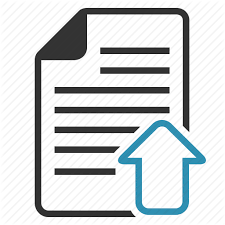IDENTIFICATION OF IRRIGATION CHANNELS USING LIDAR DRONE TECHNOLOGY USING OBJECT-BASED IMAGE ANALYSIS METHOD (OBIA)
Abstract views: 315 | pdf downloads: 879
Abstract
Irrigation infrastructure is a facility structure that can support all activities related to irrigation. The existence of irrigation infrastructure that can function optimally and effectively, especially to meet agricultural water needs can increase agricultural productivity. Maintenance of irrigation infrastructure is one of the efforts to protect food agricultural land and can sustainably support the national food security program. Monitoring of the condition of assets that support the function of the irrigation network infrastructure on a regular basis needs to be carried out. Monitoring the physical condition of irrigation canals plays an important role because irrigation canals are a sustainable system for supplying water to many agricultural areas. In addition, irrigation canals can also function to protect agricultural crops from flooding and inundation due to excess water. Unmanned aerial vehicle or drone technology can be an alternative to monitoring irrigation channels. High-resolution images obtained from this technology can provide clear results with a high level of detail. Besides being able to carry camera sensors, the addition of LiDAR sensors on drones can add important information about physical conditions for the benefit of monitoring irrigation canals. This study was conducted to determine the potential of LiDAR drones for identification of irrigation canals that have several dimensions. The method used in this study uses analysis with OBIA (Object Based Image Analysis). The addition of information from LiDAR can increase the accuracy for identification of irrigation canals in orthophoto images with a resolution of 8 millimeters.
References
Direktorat Irigasi dan Rawa. (2013). Standar Perencanaan Irigasi—Kriteria Perencanaan Bagian Bangunan (KP-03). Jakarta: Direktorat Jenderal Sumber Daya Air, Kementerian Pekerjaan Umum.
Direktorat Jenderal Sumber Daya Air Kementerian PUPR. (2018). Program Pengembangan Dan Pengelolaan Sistem Irigasi Di Indonesia.
El-naggar, Aly M. (2018). “Determination of Optimum Segmentation Parameter Values for Extracting Building from Remote Sensing Images.” Alexandria Engineering Journal 57(4):3089–97. doi: 10.1016/j.aej.2018.10.001.
Foody, Giles M. (2020). “Explaining the Unsuitability of the Kappa Coefficient in the Assessment and Comparison of the Accuracy of Thematic Maps Obtained by Image Classification.” Remote Sensing of Environment 239(December 2019):111630. doi: 10.1016/j.rse.2019.111630.
Gan, Guojun, Chaoqun Ma, and Jianhong Wu. (2007). “Data Clustering: Theory, Algorithms, and Applications.” Data Clustering: Theory, Algorithms, and Applications (January 2007). doi: 10.1137/1.9780898718348.
Hidayah, F. F., L. Q. A. Verawati, and H. Widjaja. (2020). “Pemetaan Saluran Irigasi Sebagai Upaya Penyediaan Air Bagi Kebutuhan Pertanian (Studi Kasus: Desa Sindangsari, Kecamatan Ciranjang, Kabupaten Cianjur).” Jurnal Pusat Inovasi … 2(4):627–31.
Hossain, Mohammad D., and Dongmei Chen. (2019). “Segmentation for Object-Based Image Analysis (OBIA): A Review of Algorithms and Challenges from Remote Sensing Perspective.” ISPRS Journal of Photogrammetry and Remote Sensing 150(November 2018):115–34. doi: 10.1016/j.isprsjprs.2019.02.009.
Mugiraneza, Theodomir, Andrea Nascetti, and Yifang Ban. (2019). “WorldView-2 Data for Hierarchical Object-Based Urban Land Cover Classification in Kigali: Integrating Rule-Based Approach with Urban Density and Greenness Indices.” Remote Sensing 11(18). doi: 10.3390/rs11182128.
Nugroho, Udhi C., Dony Kushardono, and Esthi K. Dewi. (2019). “Identifikasi Kawasan Pertambangan Timah Menggunakan Data Satelit Sentinel – 1 Dengan Metode Object Based Image Analysis (OBIA).” Jurnal Ilmu Lingkungan 17(1):140. doi: 10.14710/jil.17.1.140-148.
Sambah, Abu, Dwi Kuncoro, and Syaiful Anam. (2017). “Pemetaan Trase Jaringan Irigasi Melalui Analisis Geospasial (Studi Kasus Daerah Irigasi Cibuluh, Jawa Barat).” Jurnal Irigasi 12:1. doi: 10.31028/ji.v12.i1.1-10.
Trisakti, Bambang, Udhi Nugroho, Hanhan A. Sofiyuddin, and Naufal Syauqi. (2019). “Teknik Identifikasi Saluran Irigasi Pada Citra Satelit Resolusi Tinggi Technique for Identification of Irrigation Canal Using High Resolution Satellite Image By Means of Combining Rgb Composite , Canal Index ,.” Jurnal Irigasi 14(2):55–62.
Copyright (c) 2022 Jurnal Infrastruktur

This work is licensed under a Creative Commons Attribution-NonCommercial-ShareAlike 4.0 International License.














